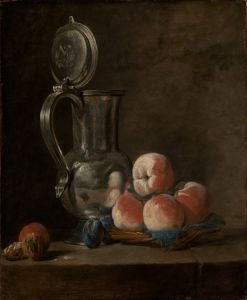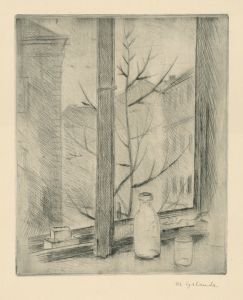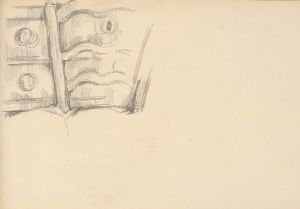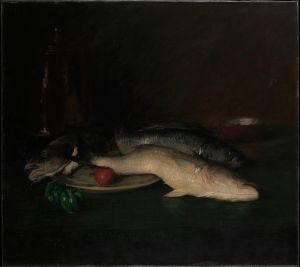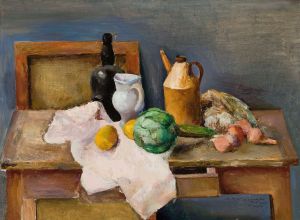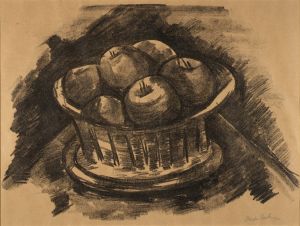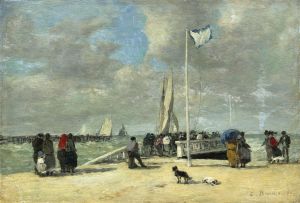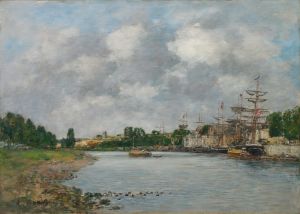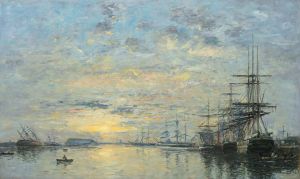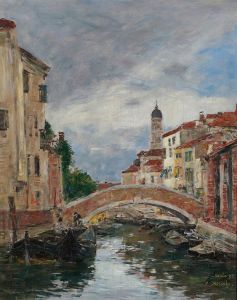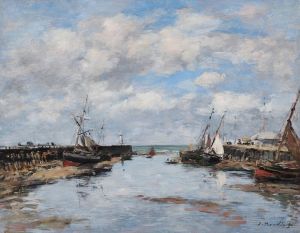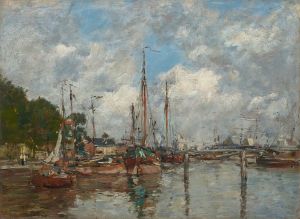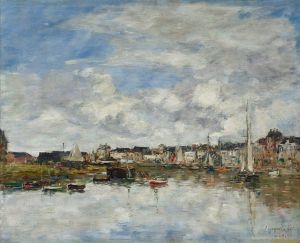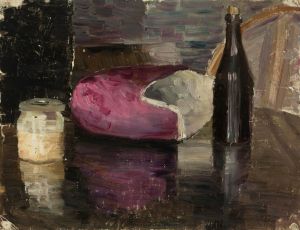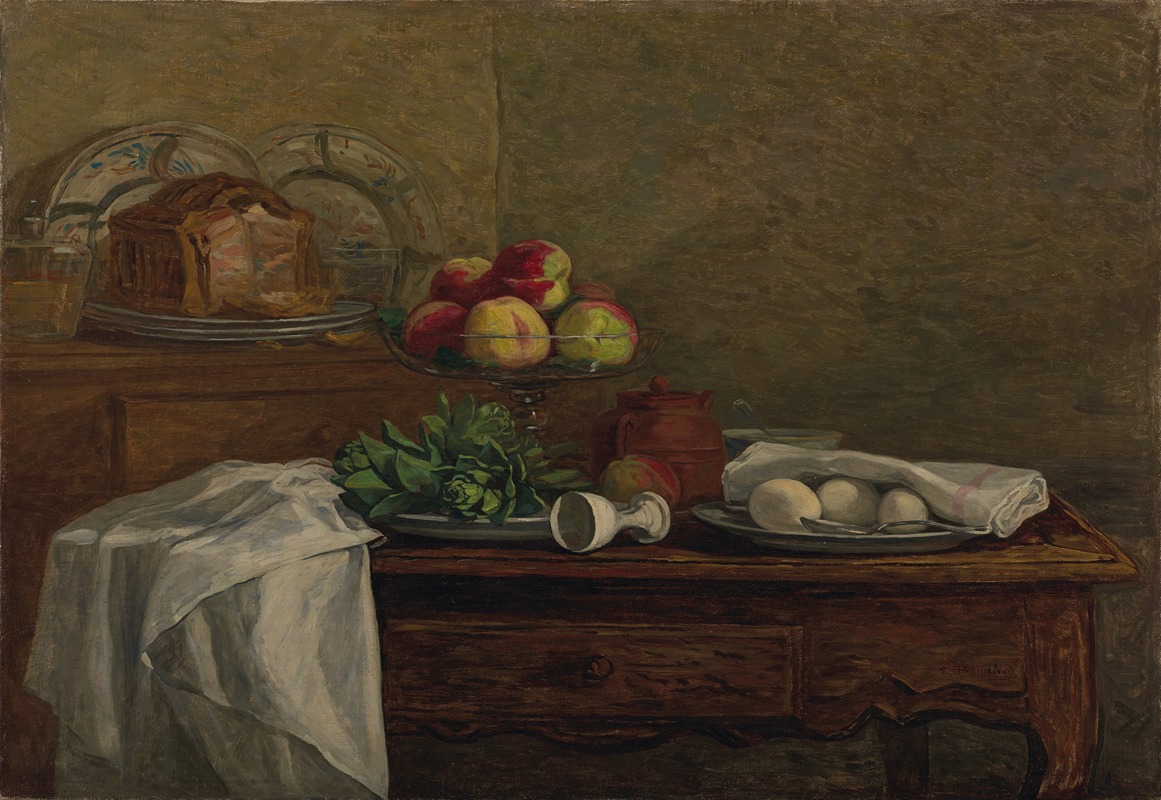
Nature morte au coquetier renversé
A hand-painted replica of Eugène Boudin’s masterpiece Nature morte au coquetier renversé, meticulously crafted by professional artists to capture the true essence of the original. Each piece is created with museum-quality canvas and rare mineral pigments, carefully painted by experienced artists with delicate brushstrokes and rich, layered colors to perfectly recreate the texture of the original artwork. Unlike machine-printed reproductions, this hand-painted version brings the painting to life, infused with the artist’s emotions and skill in every stroke. Whether for personal collection or home decoration, it instantly elevates the artistic atmosphere of any space.
Eugène Boudin, a prominent French painter, is widely recognized for his significant contributions to the development of landscape painting and his influence on the Impressionist movement. One of his lesser-known works, "Nature morte au coquetier renversé," exemplifies his skill in still life painting, a genre he occasionally explored alongside his more famous seascapes and beach scenes.
Boudin was born on July 12, 1824, in Honfleur, France, and he spent much of his early life in the coastal regions of Normandy. This environment deeply influenced his artistic vision, as he became captivated by the interplay of light and atmosphere over the sea and sky. Although primarily celebrated for his plein air landscapes, Boudin's still life paintings, such as "Nature morte au coquetier renversé," demonstrate his versatility and keen observational skills.
"Nature morte au coquetier renversé" translates to "Still Life with Overturned Egg Cup," and while specific details about the painting's creation and current location are scarce, it reflects Boudin's ability to capture the subtleties of everyday objects. Still life as a genre allowed Boudin to experiment with composition, light, and texture on a smaller scale compared to his expansive landscapes.
In this painting, Boudin likely employed a delicate balance of color and shadow to bring out the textures and forms of the objects depicted. His approach to still life was informed by his broader artistic philosophy, which emphasized the importance of capturing the transient effects of light. This philosophy is evident in the way he rendered the surfaces and materials in his still life works, imbuing them with a sense of immediacy and presence.
Boudin's contribution to art history is often linked to his role as a precursor to Impressionism. He was one of the first French landscape painters to paint outdoors, directly from nature, which was a radical departure from the studio-bound practices of his predecessors. His dedication to capturing natural light and atmosphere influenced many younger artists, including Claude Monet, who famously referred to Boudin as his "master."
While "Nature morte au coquetier renversé" may not be as widely recognized as Boudin's coastal scenes, it nonetheless provides insight into his artistic range and the breadth of his interests. His still life paintings, though fewer in number, reveal his meticulous attention to detail and his ability to find beauty in the mundane.
Boudin's legacy is preserved in numerous collections around the world, and his works continue to be studied for their innovative approach to light and composition. Although specific exhibitions or collections featuring "Nature morte au coquetier renversé" are not well-documented, Boudin's overall body of work remains influential in the study of 19th-century French painting.
In summary, Eugène Boudin's "Nature morte au coquetier renversé" is a testament to his skill in still life painting, showcasing his ability to capture the essence of everyday objects with the same sensitivity he applied to his landscapes. His work continues to be celebrated for its pioneering approach to capturing the fleeting effects of light and atmosphere, solidifying his place in the history of art.





